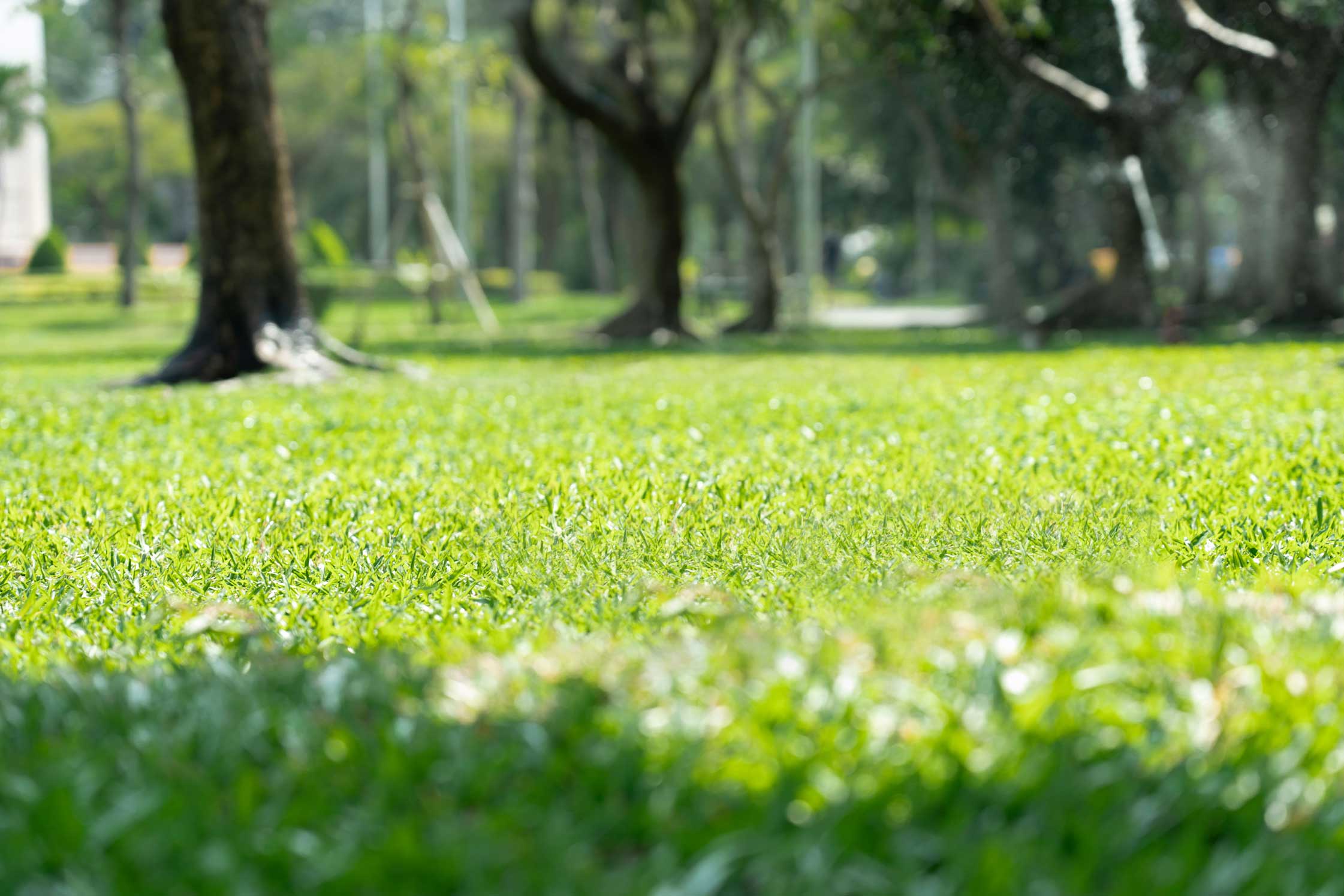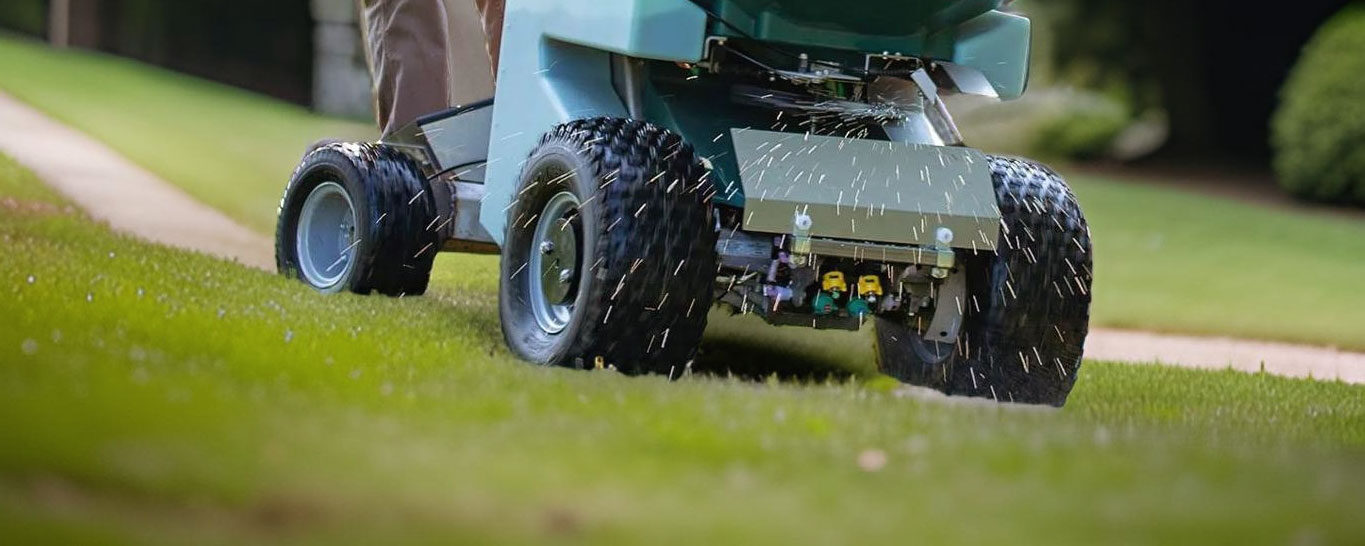Grub Prevention Tips: How to Protect Your Lawn Before Damage Starts
Grubs are one of those lawn problems that sneak up quietly—until your grass turns brown, feels spongy, and starts peeling up like old carpet. When most people notice grub damage, the pests have already been feeding for weeks.
That’s why effective grub prevention isn’t just a suggestion—it’s essential for long-term lawn health. At TLC – The Lawn Company, we help homeowners stop grubs before they cause problems, using a seasonal approach that fits right into a full-service lawn care plan.
Here’s what you need to know about preventing these underground pests from ruining your yard.
What Are Grubs—and Why Do They Damage Lawns?
Grubs are the larval stage of beetles, like Japanese beetles and European Chafer beetles. They hatch in late summer and immediately feed on your lawn’s root system. Left unchecked, even a small population of grubs can eat away at the roots of grass plants, leaving behind large, patchy brown areas.
Once your lawn shows signs of white grub damage, recovery takes time, money, and effort. The better plan is to prevent grubs from establishing themselves in the first place.
Every lawn has grubs, regardless of whether you treat them or not. The grub proofing application is designed to keep the grub population under control so they don’t devastate the lawn.

When—and How—to Apply Grub Prevention Treatment
The key to preventing a grub problem is applying lawn insect control before the eggs hatch. The best window for preventative treatment is typically mid—spring through mid—summer, before beetle larvae emerge.
Look for an expert grub control service or a DIY grub control product you can apply. Grub-proofing products are designed to interrupt the grubs’ development before they start feeding.
Here’s a breakdown of TLC’s recommended approach:
- Apply preventative grub proofing between May and the end of July
- Water the treatment in thoroughly to help it reach the root zone
- Avoid aerating or disturbing the soil for several days after application
Once treated, your lawn will have a protective barrier throughout the peak grub activity window. As part of TLC’s lawn care program with grub proofing treatment, grub proofing is applied automatically at the right time, so you don’t have to worry about timing or products.
How to Spot Grub Damage Early
Even with the best prevention, it’s helpful to know what the early signs of white grub damage look like:
- Yellowing or browning patches in late summer or early fall
- Turf feels loose or spongy and lifts easily from the soil
- Increased animal activity (like birds, skunks, or raccoons) digging might be a sign of grubs
If you see any of these signs, it's time to act quickly. TLC can assess the damage and apply a curative treatment if needed, followed by steps to help your lawn recover.
A Preventive Plan That Pays Off
Grub control is one of those steps that doesn’t show results right away, but when done right, it prevents some of the most expensive and frustrating lawn issues. Combined with regular fertilization, weed control, and smart watering habits, it’s essential to any healthy lawn routine.
Ready to build a green, resilient, and grub-free lawn? TLC—The Lawn Company offers full-season care plans that include grub prevention, customized for your lawn’s specific needs and local timing.
Grub Proofing for Lawns FAQs
The best time to apply grub proofing is between May and end of July, before beetle eggs hatch and grubs begin feeding on your lawn’s root system. Applying during this window ensures the treatment works as a protective barrier before damage can occur. The exact timing may vary slightly depending on local temperatures and rainfall, but spring to mid summer is ideal in most areas.
Yes, curative treatments are available for existing grub infestations—but results take longer and recovery will require extra care. TLC offers targeted grub control products that work on active larvae, followed by soil and turf recovery recommendations. Keep in mind that curative treatments are most effective when applied early in the damage cycle—once grass roots are fully destroyed, reseeding or repair may be necessary.
Grub damage usually shows up in late summer or early fall as yellow or brown patches that spread quickly. You might also notice turf that feels spongy or lifts up easily, like carpet. Another red flag is an increase in wildlife—birds, skunks, and raccoons often dig up lawns looking for a grub meal. But this is not always the case. To be sure you can confirm grub presence by lifting a section of turf and looking for small, white, C-shaped larvae beneath the surface, usually around the edge of the damage.
It depends on the provider. Some companies offer it as an optional add-on, while others only treat grubs after damage has occurred. TLC – The Lawn Company, offers a full-service lawn care program with preventative grub control, applying the service at the right time each year based on regional conditions. This approach helps stop problems before they start and ensures your lawn stays protected year-round.



%20(1)%20(1).jpeg)